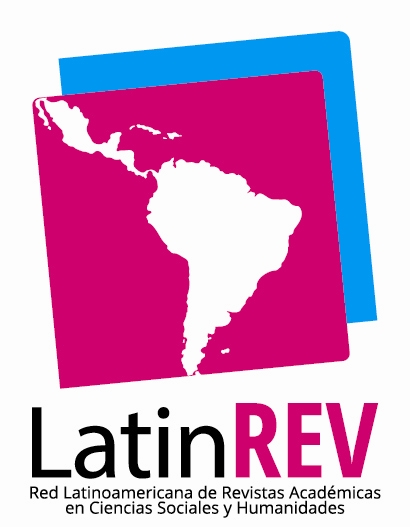Comics as tools for teaching and transmitting knowledge about history and heritage
Keywords:
heritage, comics, teaching tools, dissemination, educationAbstract
While certain popular narrative genres, such as traditional tales, epic poems, and fables were historically created following a didactic and moralizing purpose, this function is relatively recent in comics, a typical phenomenon of urban-industrial societies. Its origins, which can be associated to mass entertainment companies, deeply marked the legitimacy and cultural status of comic books. However, in recent decades, comics have begun to break free of these limits and have become a tool for teaching and transmitting knowledge, even at higher education, through the emergence of scientific books and even doctoral theses produced in graphic novel format. In this paper, we aim at problematizing the use of the language and resources of comics as a vehicle for the teaching and transmission of heritage and cultural baggage. To do so, we will be using the theoretical tools of well-known scholars of the ninth art, such as the American researcher and artist Scott McCloud and the Italian Daniele Barbieri, as well as those of more recent authors, such as the Argentineans Lucas Berone and Federico Reggiani, among others. Our intention is to put into dialogue the theoretical concepts postulated by different researchers, as opposed to the concrete experience gained in the elaboration of ¿Cómo era... la Ciudad de San Luis en la Época Colonial?, reference material produced within the framework of the research project "Memorias y Prácticas Educativas" (FCH-UNSL), whose ultimate goal was to produce teaching tools to be used at different levels of the educational system in San Luis.
Downloads
References
Barbiere, Daniele (2010). Los Lenguajes Del Cómic. Barcelona: Paidós.
Berone, Lucas (2015). “Oscar Masotta y la fundación semiológica del discurso sobre la historieta”, en deSignis N° 22. Federación Latinoamericana de Semiótica, 57-64. Recuperado de: https://ddd.uab.cat/pub/designis/designis_a2015n22/designis_a2015n22p57.pdf (01/10/22).
Bourdieu, Pierre (1999). Intelectuales, política y poder. Buenos Aires: EUDEBA.
Conselho Nacional de Desenvolvimento Científico e Tecnológico (2022). Histórias em Quadrinhos – trajetória e importância a partir de pesquisas científicas. Ministério da Ciência, Tecnologia e Inovações. Recuperado de: https://www.gov.br/cnpq/pt-br/assuntos/noticias/pesquisa-do-dia/historias-em-quadrinhos-2013-trajetoria-e-importancia-a-partir-de-pesquisas-cientificas (01/10/22).
De Dios, Estela; Perarnau, Ema; Farías, Andrea Carolina; Vieyra, Enzo y Racca, Cecilia (en prensa) "La Imaginación y la Empatía: herramientas históricas para elaborar materiales didácticos impresos sobre la Época Colonial de San Luis", en Revista Argonautas.
De Dios, Estela; Perarnau, Ema; Farías, Andrea Carolina; Vieyra, Enzo y Racca, Cecilia (2016). PI Memorias y Prácticas Educativas 2016_2019. San Luis: FCH-UNSL.
Eisner, Will (1990). Comics and Sequential Art: Principles and Practices from the Legendary Cartoonist. New York: Poorhouse Press.
Entel, Alicia (1996). La ciudad bajo sospecha. Comunicación y protesta urbana. Buenos Aires: Paidós.
Facultad de Ciencias Humanas, Universidad Nacional de San Luis (S/R). Proyectos de Investigación Actuales - Área Pedagógica. Recuperado de: http://humanas.unsl.edu.ar/secretarias/cienciaytecnica/archivos/pedagogica.pdf
Ford, Aníbal (1994). Navegaciones. Comunicación, cultura y crisis. Buenos Aires: Amorrortu.
Ford, Aníbal; Rivera, Jorge y Romano, Eduardo (1990). Medios de comunicación y cultura popular. Buenos Aires: Legasa.
Gago, Sebastián; García Lucero, Dafne y Salinas, Martín (2021). "El cómic-Tesis como alternativa en los géneros de escritura académica" en Actas del VII Encuentro Latinoamericano de Metodología de las Ciencias Sociales Migración, diversidad e interculturalidad: Desafíos para la investigación social en América latina. Recuperado de: http://elmecs.fahce.unlp.edu.ar/vii-elmecs/actas/ponencia-220905120927873853
García Canclini, Néstor (1999). "Los usos sociales del Patrimonio Cultural", en Aguilar C. Encarnación. Patrimonio Etnológico. Nuevas perspectivas de estudio. Andalucía: Consejería de Cultura, 16-33.
Jenkins, Henry (2012). “Introduction. Should We Discipline the Reading of Comics?”, en Smith, M. y Duncan, R. (eds.). Critical Approaches to Comics. Theories and Methods. New York: Routledge, 1-14.
Martín-Barbero, Jesús (1983). “Memoria narrativa e industria cultural”, en Comunicación y cultura (10), México.
Massotta, Oscar (1969). “Breccia de cerca”, en Literatura Dibujada, (3), 3-8.
Mccloud, Scott (1994). Understanding Comics: The Invisible Art. New York: Paradox Press.
Morrison, Grant; Reis, Iván y Prado, Joe (Junio, 2015). "Superjudge", en The Multiversity (02).
Ordenanza C.D. 006/2011 Rectificatoria de Ordenanza Reglamentaria de Tesis, Trabajo Final y Residencias (2 de septiembre de 2011). Recuperado de: http://humanas.unsl.edu.ar/archivospdf/ord_cd_006_2011.pdf (01/10/22).
Reglamento Interno del Doctorado en Comunicación Social ECI-UNC (2014). Recuperado de: https://fcc.unc.edu.ar/wp-content/uploads/sites/9/2021/08/reglamento_2014_dcs-5-14_0.pdf (01/10/22).
Verón, Eliseo (1999). "Entre la Epistemología y la Comunicación", en CIC Cuadernos de Información y Comunicación, N° 4, Servicio de Publicaciones Universidad Complutense de Madrid. Madrid, España.
Wright, Bradford (2001). Comic Book Nation: The Transformation of Youth Culture in America. Baltimore: The Johns Hopkins University Press.
Downloads
Published
Issue
Section
ARK
License
Copyright (c) 2022 Martín A. Salinas

This work is licensed under a Creative Commons Attribution 4.0 International License.






